Chef McLagan Sees the Beauty in Bitter
CULINARY POINT OF VIEW
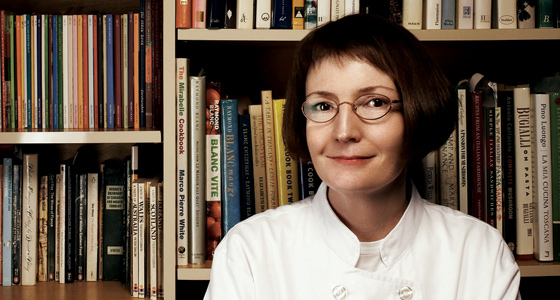
Photo ©Rob Fiocca
Jennifer McLagan's Radicchio Pumpkin Risotto
After working in restaurants around the world, Chef Jennifer McLagan’s love for cookbooks led her to put down spatula and pick up the pen. Since 2005, she has written four cookbooks exploring under-appreciated food treasures like Fat, Bones, Odd Bits, and most recently Bitter: A Taste of the World’s Most Dangerous Flavor. In each, McLagan explores an ingredient through science, culture, and history, while providing unique recipes that bring the ingredient to life. In Bitter, she urges us to reconsider bitterness as a taste that not only challenges palates and culinary sensibilities, but also adds depth and balance to dishes.
Kelly Hensel: What made you decide to pursue a career in food after getting your degree in economics and politics?
Jennifer McLagan: I just started to get interested in food through reading more than anything else. Growing up in Australia, I desired like Elizabeth David and Jane Grigson [cookery writers] and those classic kinds of things. And then I remember reading all the Time-Life Foods of the World books from cover to cover. I wasn’t a kid that liked to cook or anything like that. I didn’t grow up with my mother’s apron strings or anything. But I just kind of got interested in the history and the background of food.
And then I did a French course where I was taught the language through recipes, which was kind of interesting. I got a part-time job when I was at university working in a restaurant, and I really enjoyed it. I think after all that study, I liked doing something with my hands. And then when I finished my degree, I thought since I like cooking so much I should go and do some study and try cooking for a while. I really found it quite satisfying.
Hensel: So you were working as a chef in restaurants for years. How long did you do that and what was your experience in that whole world?
McLagan: At that time in Australia, pretty much the only way you could get into cooking was via an apprenticeship. I did a course at a chef school that was for people who were too old to be apprenticeships. And then I got a job in a big hotel. It was classic kitchen, with the executive chef and sous chef, and all the stations. And they didn’t quite know what to do with me. The kids coming right out of school weren’t treated very well in the kitchen, and it was really male dominated.
So they put me straight into garden/entrée doing the salads and stuff, and I said no, no. And I ended up being the fish cook. Because I was a little bit older and a woman, they were actually quite nice to me. After that, I left Australia and went to the United Kingdom, where I worked in a restaurant owned by Prue Leith who is quite famous for doing British food before it became popular. And then I worked for the American ambassador in his residence, which was kind of interesting because I had somewhere to stay—I had room and board but it was kind of like Downton Abbey: I was on the wrong side of the staircase.
And then I went to Paris and mucked around for a bit and tried to get a job, and I ended up in Canada where I met my husband. I worked in restaurants and then I worked catering. Because he makes models for photography and film, I got into food styling, which I found paid better, to be honest with you. And I got to work for myself. But it was kind of a big leap because I had gone from making food taste good to just making it look good. It didn’t matter what it tasted like.
As a food stylist, I worked on a lot of other people’s cookbooks, and I thought if these people can do a cookbook, I’m sure I could do one just as well. I had written some articles for some Canadian magazines, so I guess I already had some experience writing.
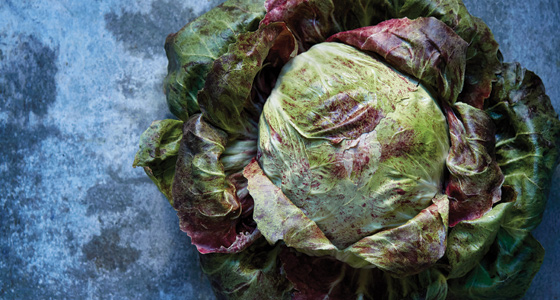
Photo ©Aya Brackett
Hensel: You have done a lot of research for this book. It combines history, sensory research, food science in addition to delicious recipes. Why do you feel it is important to have this other information in combination with the recipes?
McLagan: I always wanted to do more than a cookbook. For me, the recipes are great, but food is part of our culture. All of the other information you find in my book—such as references to food in art and literature—all of that belongs in a cookbook, I believe. Because food, art, culture—it all goes together. Food is very important in how you relate to each other and it defines people’s culture too.
So right from the beginning, I wanted to write that kind of cookbook. And it made it much more interesting for me because the research is the fun part. You find out tons of stuff you didn’t know. When I started on this book, I thought I kind of knew what bitter was and I discovered I didn’t at all.
Hensel: In Bitter you wrote, “Food is botany overlaid with history, family, and identity.”
McLagan: It is so true. If you think about it, immigrants come to countries and they’ll learn a new language and maybe they’ll change how they dress, but they’ll pretty much keep their food for the longest time. It really is a part of who you are.
Hensel: Bitter seems to be having a moment in the culinary spotlight. Brussel sprouts and kale are everywhere. Where do you think this stems from?
McLagan: I think the interest in bitterness—especially in the United States—is coming from the cocktail movement. Maybe Don Draper [Mad Men] inspired this movement away from appletinis and crantinis. Vodka used to be the alcohol of choice because it didn’t really matter what you put it in—you couldn’t taste it. But now people understand that if you use an interesting gin, whiskey, or rye, you want to match it with some bitterness. And they always had bitters in those old, classic drinks in some form or another. Also, people are making their own bitters. They’re making artisanal bitters that range from celery and rhubarb to lime and lemon. So, as people drink something that isn’t super sweet, they appreciate it, and become accustomed to the taste of bitterness.
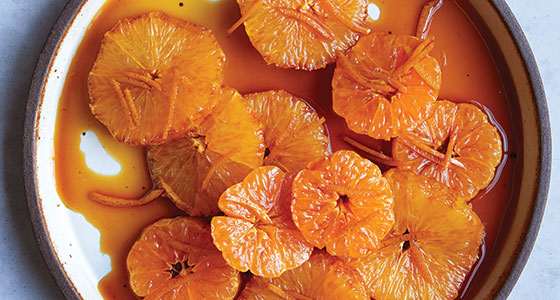
Photo ©Aya Brackett
Hensel: Can you discuss the dichotomy of bitter flavors? They seem to have a split personality—with some signaling toxins and others medicinal benefits.
McLagan: It’s kind of a double-edged sword. And I still think it’s wise if something is extremely bitter not to eat it, but even then it’s kind of the amount that you eat. There are a lot of medicinal things that are made from bitter roots and herbs. And you see with all the cultures that have retained that, there is this whole tradition of if it’s mildly bitter, you can eat it raw. If it’s just medium bitter, you probably should cook it first to remove some of the toxins. If it’s extremely bitter, you’ve got to be careful and only use very small amounts medicinally.
I also think that bitter is important in order to add complexity and balance out flavors. Most of the dishes featured in my book aren’t bitter to eat, but if you took the bitterness out, they wouldn’t be as interesting or complex. It’s like putting in salt when you’re cooking. Your dish may not taste salty but if you had left the salt out it would taste really boring or flat. Bitter can highlight and blend flavors.
Caramel is my favorite for that because people say caramel is sweet. But if you cook the sugar to a point just before it burns you create a gazillion different chemical compounds that make the resulting caramel sauce so much more interesting. It ends up having just a hint of bitterness, which takes that syrupy, sugary sweetness away from it. It’s still sweet but it’s more complex at the same time.
Bitter also pairs really well with fat, which I can’t believe I didn’t discover when I wrote my Fat book. But they’re just perfect with each other because something really rich like a duck breast paired with a bitter greens salad, or even some rapini, is just so delicious together.
Bitter flavors actually stimulate your appetite and also keep all the gastric juices flowing so they help you digest the meal, as well. That’s why there’s a big tradition in lots of cultures of having a bitter aperitif to open up your appetite and then finishing off with a digestive.
Hensel: Some of the ingredients (such as cardoon) might be hard for the average person to find.
McLagan: I’m sorry—I’m one of those cookbook authors that makes you work. With my first book, Bones, everyone said, “We can’t find any bones.” But now you can find marrow bone, and more and more butchers are opening up again. The same thing happened with Fat. Now you can get lard again in supermarkets and butchers so I figure if people ask for it, they’ll get it.
It takes a lot of work to cook a cardoon but it’s one of my favorite vegetables so I gave it a bit of promotion in the book. And they’re beautiful. They’re just physically beautiful.
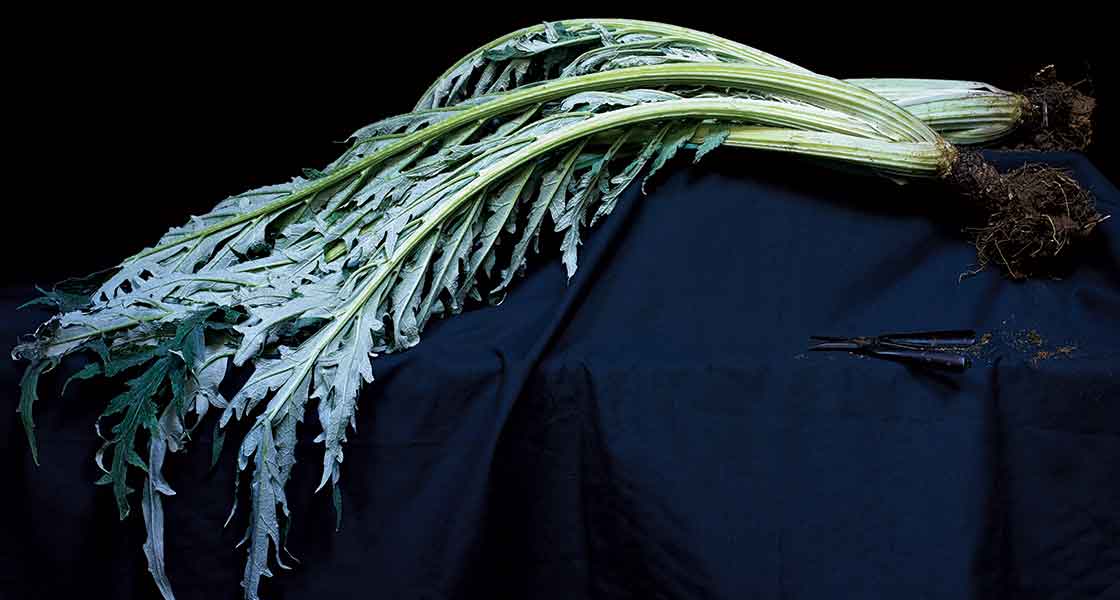
Photo ©Aya Brackett
Hensel: What recipe would be an easy introduction for people looking to begin their exploration with bitter?
McLagan: I think it’s probably just good to start with something as simple as a salad. You can start off with basic Boston lettuce and throw in a few dandelion greens, some peppery arugula, or some radicchio or Belgian endive, and then gradually take out the Boston. You’ll find, I think, that your pallet will adjust quite quickly. Or just making a simple sauce for pasta by taking some Italian sausages out of the casing and cooking them in a pan with a little bit—maybe half a cup to start—of rapini chopped up. The next time, you’ll be putting in more rapini.
Hensel: How do you approach recipe development for your cookbooks? Are they a constant work in progress?
McLagan: Yes. Even after I’ve written them and published them in a book, I’m still probably playing around with them. I’m forever doing that kind of stuff. I like to see where recipes come from. I think too many people put recipes in books and very few of us who write cookbooks create a recipe that’s entirely original from scratch. We’re all working on someone else’s—we’re working on a variation. We take someone's recipe and we play with it.
So they come from various sources. I’ll be in a restaurant and I’ll eat something, and I’ll think that’s kind of interesting. Or I eat someone’s recipe and I think it would be better if I added this to it. I want to tell people that process in my cookbook recipes—where I came from, where I first tasted it, and how I think I’ve made it better. This hopefully gives readers license to make their own modifications to the recipe. Because recipes are just an outline; they’re not carved in stone.
And sometimes the recipes just come to me. For example, a lot of people love my tarragon roasted celery recipe. I’m sure people have roasted celery before me, but I just happened to have a bunch of celery that was hanging around in my fridge. I also had just picked a whole lot of tarragon from my garden. So, I just threw it all together. I was cooking with what was left in the fridge and it was delicious. And then I had to kind of fiddle with it a little bit to make it a real recipe, but a lot of my recipes come from opening the fridge door and looking inside and seeing what’s there.
Hensel: You dedicated the book to your husband for “trying to make me love rutabaga.” So, have you developed a love for the root vegetable?
McLagan: Let me say I can survive rutabaga, or as I call it a swede. It’s still not my favorite vegetable and it’s funny because a lot of people tell me that they find rutabaga sweet. And they’re probably right, but I think maybe because I grew up with it boiled for a long time it’s always bitter to me. But with the caramelized shallots, it’s pretty delicious. And I’ll eat it with roasted vegetables. But it’s not the first vegetable I reach for.
Hensel: What’s your favorite bitter ingredient?
McLagan: Well, the cardoon is one of my favorites because I like everything about it. I like radicchio a lot—I like it cooked better than I like it raw. I love the radicchio pie recipe. That’s a great way to eat radicchio. And I think we should be using more celery, which is only mildly bitter. But we tend to throw the leaves away and we should use them more. We all have celery in our fridge and we tend to eat it raw, but it’s delicious cooked. So there are things like that that I kind of want people to use again. But I would say maybe radicchio after cardoons. It depends on what mood I’m in.
Hensel: You conclude your book stating that you have really just begun your exploration of bitter. Could there be a Bitter Volume 2 in your future?
McLagan: I don’t think I’ll do Bitter Volume 2 but I wanted to point out to people that when you do a single subject cookbook, you are always learning something. I’ve learned more stuff about fat, and I’ve learned more stuff about odd bits and bones. You keep on learning. But that’s what’s great about anything to do with food or cooking—just when you think you start to know it all, you realize you don’t know anything. There’s always another culture and another group of people using the same ingredients in different ways.
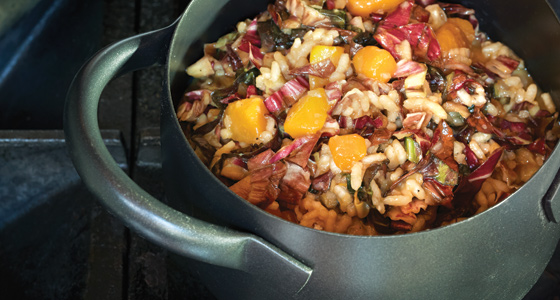
Photo ©Aya Brackett
Radicchio Pumpkin Risotto
Reprinted with permission from Bitter: A Taste of the World’s Most Dangerous Flavor, with Recipes by Jennifer McLagan, copyright © 2014. Published by Ten Speed Press, an imprint of Random House LLC.
Serves 2
2.5 cups chicken stock
1/4 cup unsalted butter
1 shallot, finely chopped
6 oz pumpkin, cut into 1/2-inch dice (about 1 1/4 cups)
sea salt
5 1/4 oz radicchio leaves, rinsed and trimmed
1/2 cup risotto rice
2 tbsp white wine or dry vermouth
freshly ground black pepper
Parmesan cheese
- Pour the stock into a saucepan and bring to a boil. Lower the heat so the stock barely simmers.
- In another saucepan, melt half the butter over medium heat. Add the shallot and cook until translucent. Add the diced pumpkin and stir to coat the pieces with the butter. Season with salt, and cook until the pumpkin starts to soften slightly at the edges, about 5 min.
- Meanwhile, cut the radicchio leaves in half lengthwise, then crosswise into 1/4-inch strips. You should have about 4 cups.
- Add the rice to the pan, stirring to warm the grains and coat them in butter. Stir in the radicchio and continue stirring until it wilts and changes color. Pour in the wine and cook, stirring until it evaporates; season with black pepper. Now add a ladleful of hot stock and keep stirring the simmering rice constantly until the liquid is almost completely absorbed. Continue adding the stock, one ladleful at a time, when the previous liquid is almost completely absorbed.
- After 20 to 25 min, the pumpkin should be cooked and the rice should be creamy and cooked but still slightly al dente. Remove the saucepan from the heat and let set for 2 min. Check the seasoning, stir in the remaining half of the butter, and serve in warm bowls. Grate Parmesan over the top.


